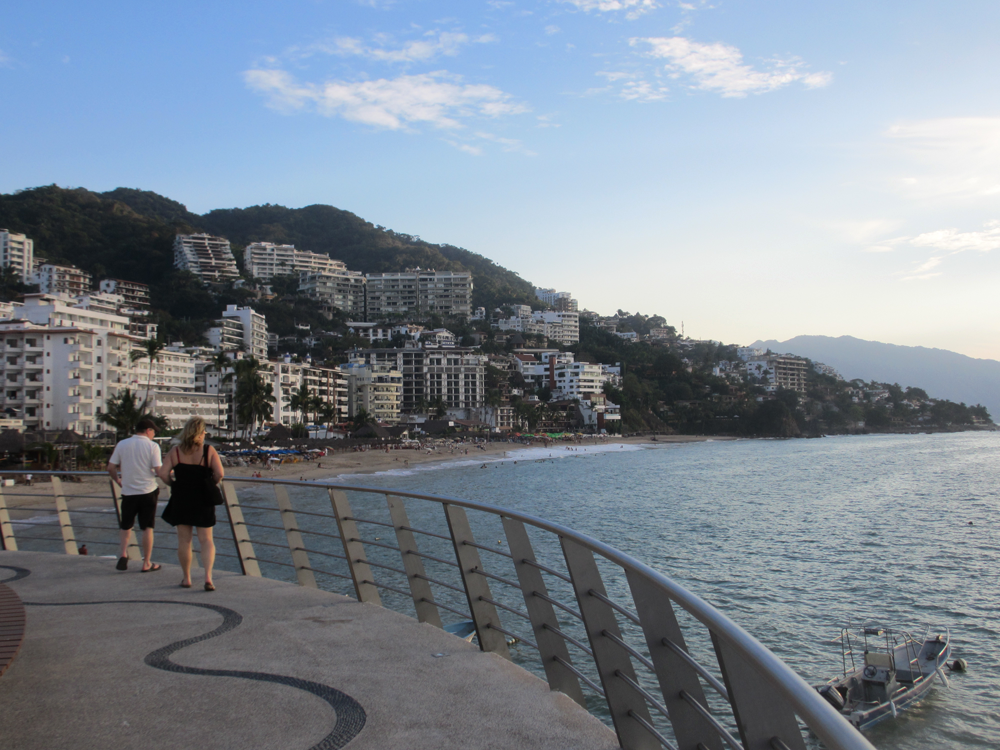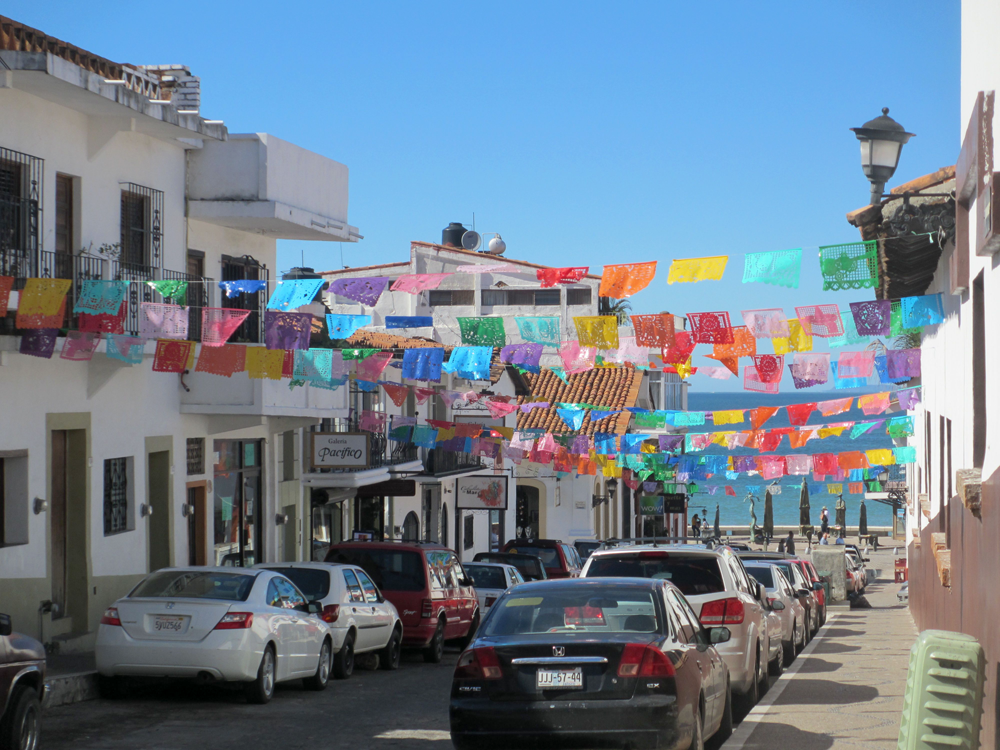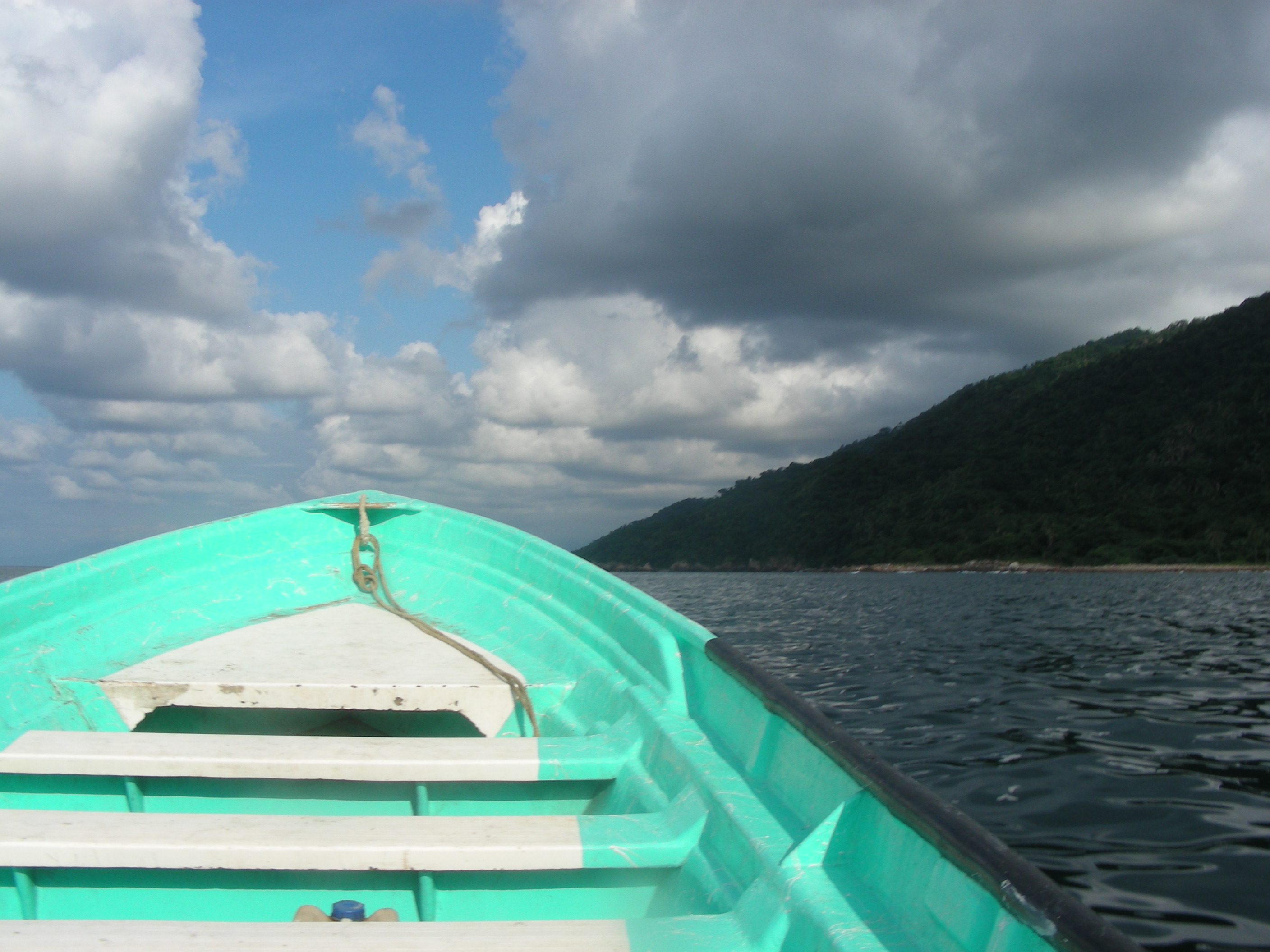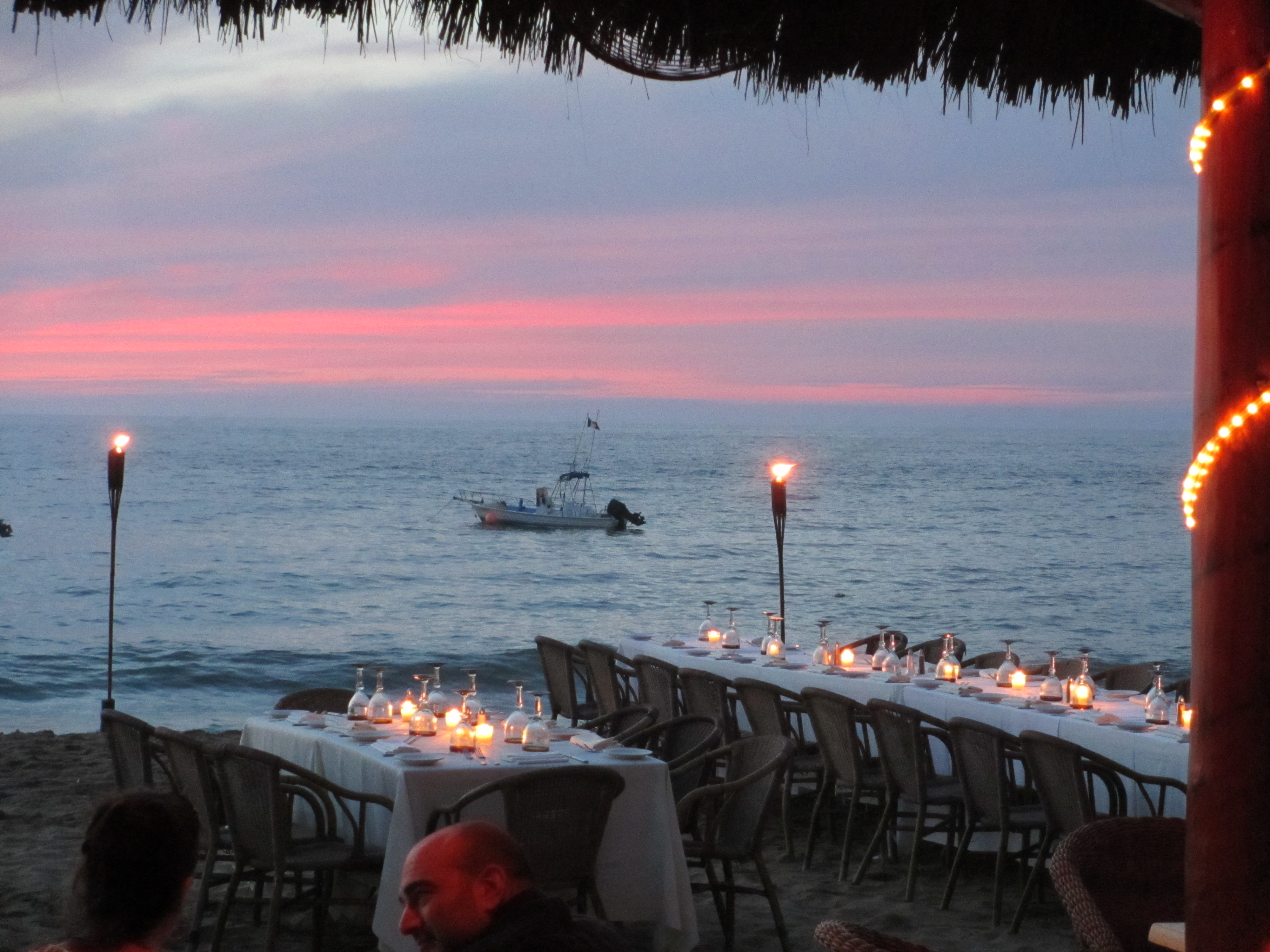Geography and Location
Puerto Vallarta is a city of 250,000 at the center of the Banderas Bay (the Bay of Flags), on the West Coast of mainland Mexico. It’s a 1-hour flight from Mexico City, a 2 1/2-hour flight from Los Angeles, and 4 1/2-hours from Toronto.
The city rises quickly from the bay into hills and mountains covered in dense jungle and vegetation, ringing the city in a ribbon of green. Houses, villas, condos and resorts are sprinkled throughout the hills, giving the city a Mediterranean feel. Along the central part of the city lies the Malecón (boardwalk). Vallarta’s Malecón was completely rebuilt in 2010/2011.
The river Rio Cuale splits the city in two: north of the Cuale lies El Centro and its hills, the Hotel Zone, Marina, airport and the beaches along the bay to its northern tip at Punta Mita. To the south lie Colonia Zapata, Los Muertos Beach, Olas Altos and the beaches to the south to Boca de Tomatlan.
El Centro is the oldest section of town, which runs immediately north of the Rio Cuale, and includes the city’s oldest landmark, Our Lady of Guadalupe church and the primary part of the Malecón. El Centro’s hills include a wide variety of both Mexican and residences, small Ex-pat hotels/B&B’s, restaurants, art galleries, bodegas, bars and shops. Bordering El Centro on the east, along the northern bank of the Rio Cuale, is Gringo Gulch, named for the Americans settling into PV in the early 60s. It’s also where Richard Burton and Liz Taylor had their homes.
Outdoor Adventures
Hiking, zip-lining, motorcycle/ATV riding, and visiting all the small villages along the Bay are good ways to spend a day. Even going to PV’s arboretum is a visual adventure that won’t disappoint.
And if you play golf like we do, its an adventure as well! There are many, many great golf courses in and around PV.
It’s widely acknowledged that the 1963 The Night of the Iguana put PV on the tourist map. John Houston is perhaps the patron of the city, with more buildings, houses, mistresses than anyone. To this day, PV has a significant Film Festival started by Houston’s children.
There is also a healthy theater community, with original and revivals plays and cabarets almost every night during the season.
Restaurants and Bars
Where to start? PV has some of the best restaurants of any city we’ve visited. Yes, of course we have terrific Mexican food, but we also have excellent Spanish tapas, French, Argentinian, Italian, Chinese, Thai, German, and seafood restaurants throughout the city.
Shopping
How could we leave out shopping? Jewelry, art, antiques, clothing, sporting goods, cigars, shoes, souvenirs, tequila, and whatever else you could want are on almost every street in El Centro and the Romantic Zone.
Brief History
The city that eventually became Puerto Vallarta sprung up along the bay as an agricultural and supply town supporting the large mining operations in the mountains of the Sierra Madres and evolved into a fishing village as the mines were depleted. The first airplane landed in 1932 and the first road over/through the mountains was opened in 1942. In the 1950s Vallarta started to attract American artists and tourists. Perhaps as a result of this, PV has a significant artist community today and is world famous for its statues and art along its Malecón. In 1958, 24 hour electrical generation arrived. The original Corona Adobe was the 7th home to be connected to the grid.
An excellent history and overview of Puerto Vallarta on Wikipedia.
Things to Do
Vallarta is small enough to be charming and large enough to keep your interest, so you’ll never be bored. Here’s just a few of the things people like to do in PV
The Beaches, Water Sports, Snorkeling, Fishing and All Things Water: By far and away the most popular activities involve the water — whether its flying over it in a para-sail, powering through it in a Ski-Doo, diving under it while snorkeling, going sport fishing way out in the Bay or just looking at it while catching some rays. And how could we not mention whale watching, where it’s not impossible to see 50 whales in an afternoon sitting (in-season)!
Local beaches include:
- Playa Camarones (Shrimp Beach) – Col. 5 de Diciembre (vicinity of Av. Paraguay – Hotel Buenaventura. This is the northernmost public beach in the City of Puerto Vallarta proper. It is named after the shrimp fisherman that once landed their launches on the beach to unload their catch.
- Playa Olas Altas (High Waves Beach) – Col. Emilio Zapata – the beach extends from the Cuale River South to the fishing pier. In spite of the name, the waves offshore are not particularly high, and the beach is a popular place to swim, especially for locals and national tourists. The beach is lined with outdoor restaurants.
- Playa Los Muertos (Beach of the Dead) – Col. Emilio Zapata – the city’s largest public beach. Legend has it the beach’s name (Dead Men’s Beach) stems from a battle between pirates and local miners after which bodies remained strewn on the beach. The South Side of the beach is a popular gathering spot for gay and lesbian tourists. The North end is frequented mostly by locals, and national tourists. The city has recently tried to change the name of the beach to Playa del Sol.* This information is from Wikipedia
Getting Around
Getting around PV is extremely simple: walk or grab a taxi. Taxis are everywhere, and very cheap. Taxis don’t have meters. Ask the driver before getting in what it will cost. Around town fees are 50-100 pesos. Cab drivers aren’t tipped unless they assist you with your luggage. If you’re coming back to the Corona Adobe, just tell the driver to take you to “Corona and Miramar” in El Centro.
It’s easy to get to or from the airport from the Corona Adobe via taxi. It should cost you somewhere between 130 and 160 pesos to the airport and a fixed price from the airport is currently 240 pesos.











